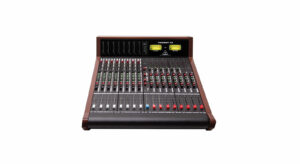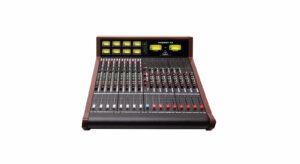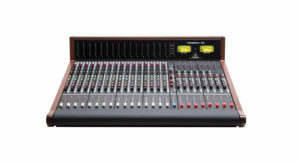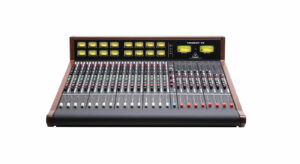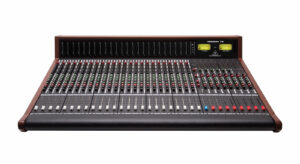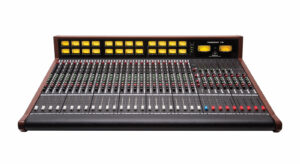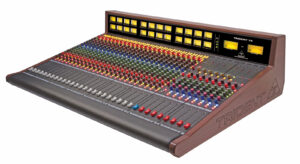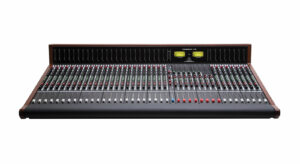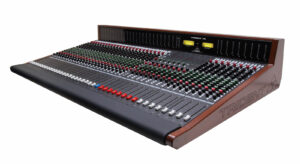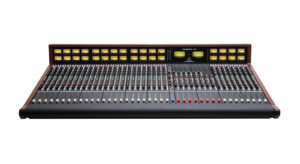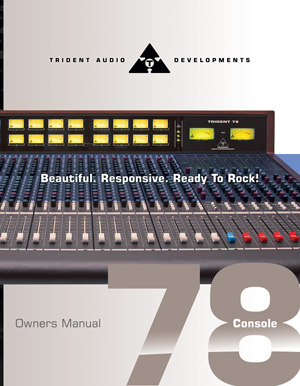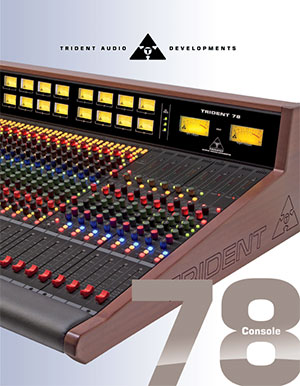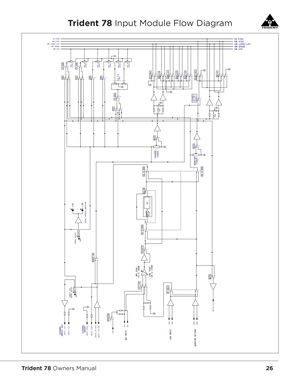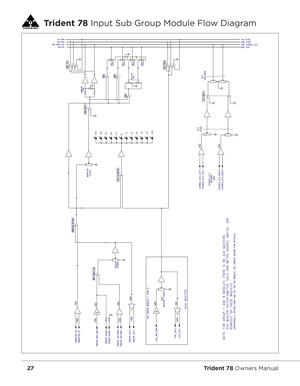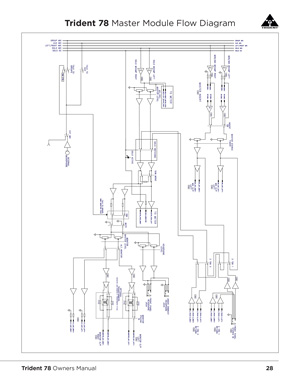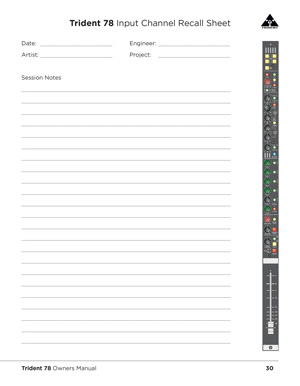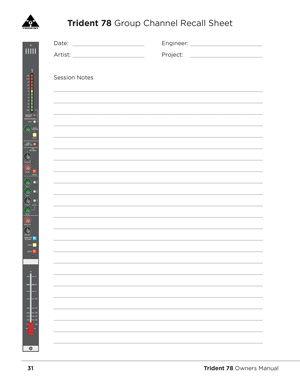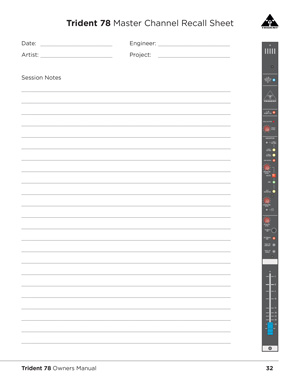- Overview
- Config
- Specs
- Gallery
- Comparison
- Literature

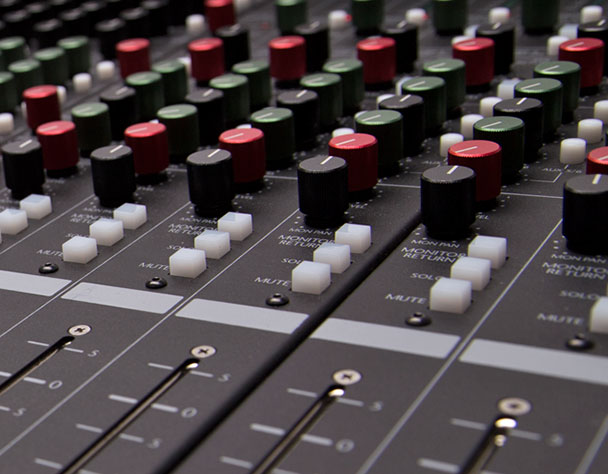
The Trident 78 all analog consoles are all Trident through and through.
The Trident 78 is a cost effective mixing console tailored for engineers, studio owners, educational facilities, houses of worship, and live sound applications.
The 78’s are Split/lnline consoles with individual channels in 4-way panels. Using an 8 subgroup configuration and incorporating 6 Aux sends, its routing options are vast and simple to use. Connections are fast and easy with DB-25’s throughout the board and XLR’s for speaker and main outputs.
With the 80B EQ at its core, including selectable channel inserts and discrete preamps driving the inputs, the Trident 78 consoles offer a wide array of summing and mixing options. The uncompromised sonic quality and compact footprint of the 78’s are able to meet any demand.
Features found throughout the 78 make for a straightforward and powerful package, but paramount to all else is The Sound. Among the many styles, preferences and methods of recording exists the expectation that a board must have the ability to be pushed hard and sound big. This is a hallmark of the series 80 consoles and the 78 carries that tradition forward.
Bottom line: The Trident 78 was created with all of this in mind so that you can use it to make great sounding tracks.
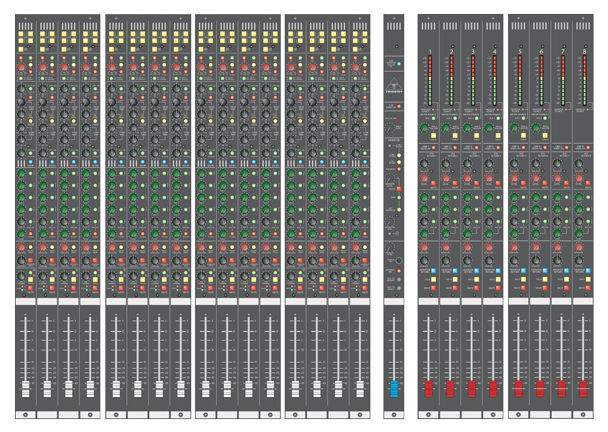
Modularity Throughout
The 78’s by design are manufactured to be a more cost effective variant of the fully modular 88’s. Incorporating a similar chassis design and the same meter bridge, the 78’s have a rugged and proven core. Using a simi-modular design the 78’s are able to effectively reduce their overall costs without a significant sacrifice to serviceability.
- All input channels are individual boards, faders included, each in a 4 channel panel.
- Subgroups are individual boards, faders included, each in a 4 channel pack.
- Master Channel is an individual channel separated from all others.
Split/Inline Console:
Since the inception of this configuration by Trident Audio on the A-Range console in the late 1960’s it has been adopted throughout the industry and remains a standard configuration for our consoles today.
- Dual Inputs to the channels with line and monitor inputs
- 4 Band EQ with sweeping mid bands and selectable low and high bands
- 27dB of headroom
- Channel Inserts
- Selectable EQ Path
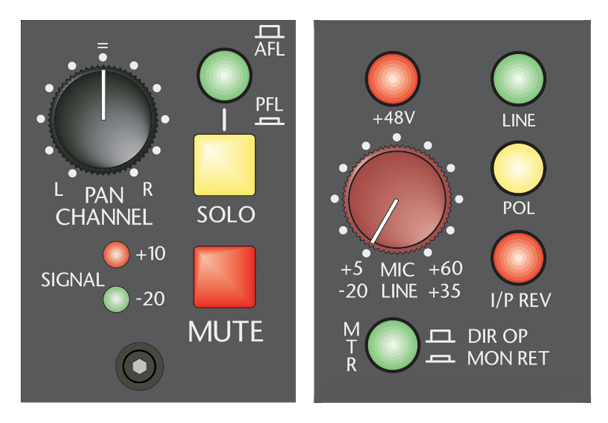
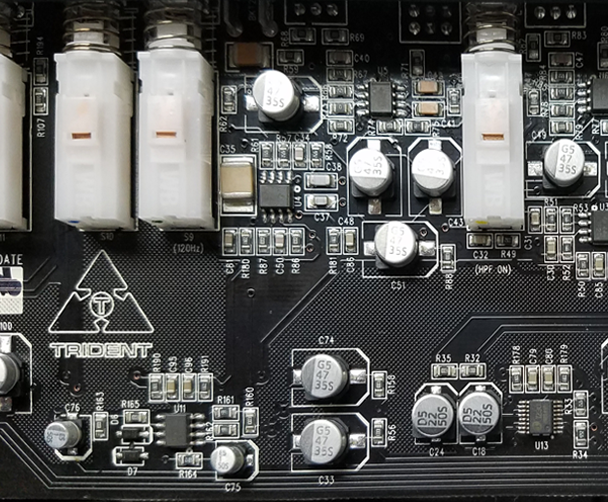
Microphone Preamp:
The 78’s incorporate the same high quality Class A Discrete preamp as the 88’s. These preamps have lots of headroom and high gain fully capable of driving ribbon microphones.
- 60dB gain discrete preamp
- Balanced inputs
- Balanced inserts with full bypass
- Input Reverse Switch
- Mic/Line Switch
- Phantom Power Switch
Powerful EQ:
The 78’s incorporate the iconic Series 80B console EQ as the main channel EQ throughout the console. This EQ is known throughout the industry for its musicality and ease of use.
- Selectable high bands at 8k and 12k
- Sweepable High and Low Mids
- Selectable low bands at 60Hz and 120Hz
- 50Hz High Pass Filter
- Selectable Channel Insert
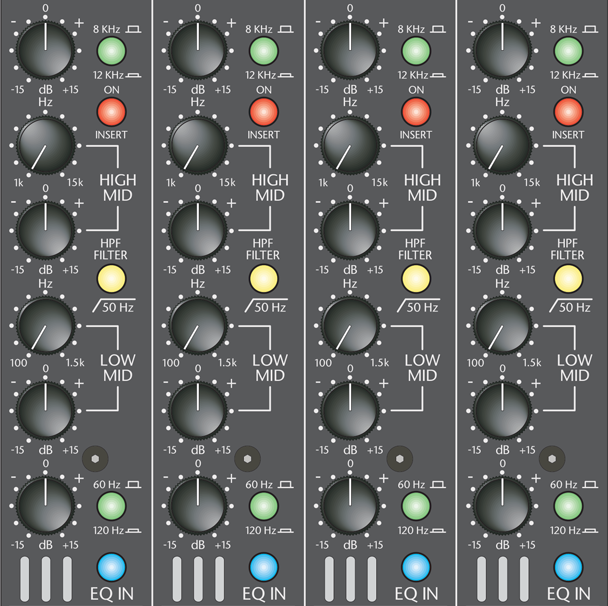
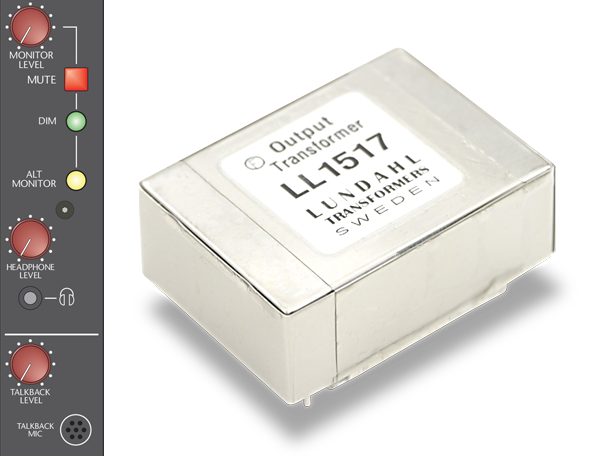
Master Section:
The master section of the 78’s are laid out for ease of use and have all the necessary features to manage your monitors, talkback, and stereo returns.
The 78’s master section is an independent channel from the rest of console to ensure that your console’s master output functions can be easily and quickly serviced with little or no downtime.
- Main & Alt Monitor Control
- Mute, Dim & Mono Controls
- 2 On board Headphone connections with Gain
- 8 Subgroups
- 8 Stereo FX Returns
- Two 2 Track Returns
- Subgroup Monitor Returns
- 2 Mono and 1 Stereo AUX
- Subgroup Stereo FX Returns
- 1/8″ TRS Selectable Input
- Onboard or External Talkback Mic
- Selectable Output Transformer Option
Configuration
Input Section Feature Highlights
Mic and Line Gain Control
Mic or Line levels on each channel.
I/P Reverse Switch
Flips channel input to the monitor section.
Meter Select Switch
Allows you to choose metering from the Direct Out or Monitor Return.
Mic Pre
A fully discrete Class A design mic pre.
EQ
The Series 78 incorporates the classic four band equaliser which is identical to that employed in the Trident Series 80B console. It consists of frequency switchable high and low pass shelving sections, coupled with two swept low and high mid range bands and a switchable 50Hz, 12dB per octave filter. Furthermore the EQ has its own independent Insert. Either bypass the EQ or use any other outboard EQ or device in conjunction with each other.
Master and Aux Section Highlights
Master Section
The master section features 6 AUX Masters each with Solo. AFL/PFL Master with level adjustment. In addition to the main speaker outputs there is also a separate ALT Monitor, each with level control, DIM, and on/off switches. The Monitor section allows the return of 2 separate stereo signals direct into the master section with level and mute. Or plug your portable device directly into the panel with a top mounted 1/8th inch TRS input. Through Talkback control you can talkback to the Auxes or the groups. Using either the onboard talkback mic or an external mic.
Monitor Section
The Trident 78 is a split in-line console. This means you can switch the inputs on each channel providing an easy workflow when tracking and mixing.
Aux Section
The Trident 78 features 6 Aux sends all with pre or post fade selection, accessible on every channel. Stereo Aux 5/6 can also be sent to the Monitor section.
Trident 78 Input Channel Videos
Download a High-Res Channel Rendering
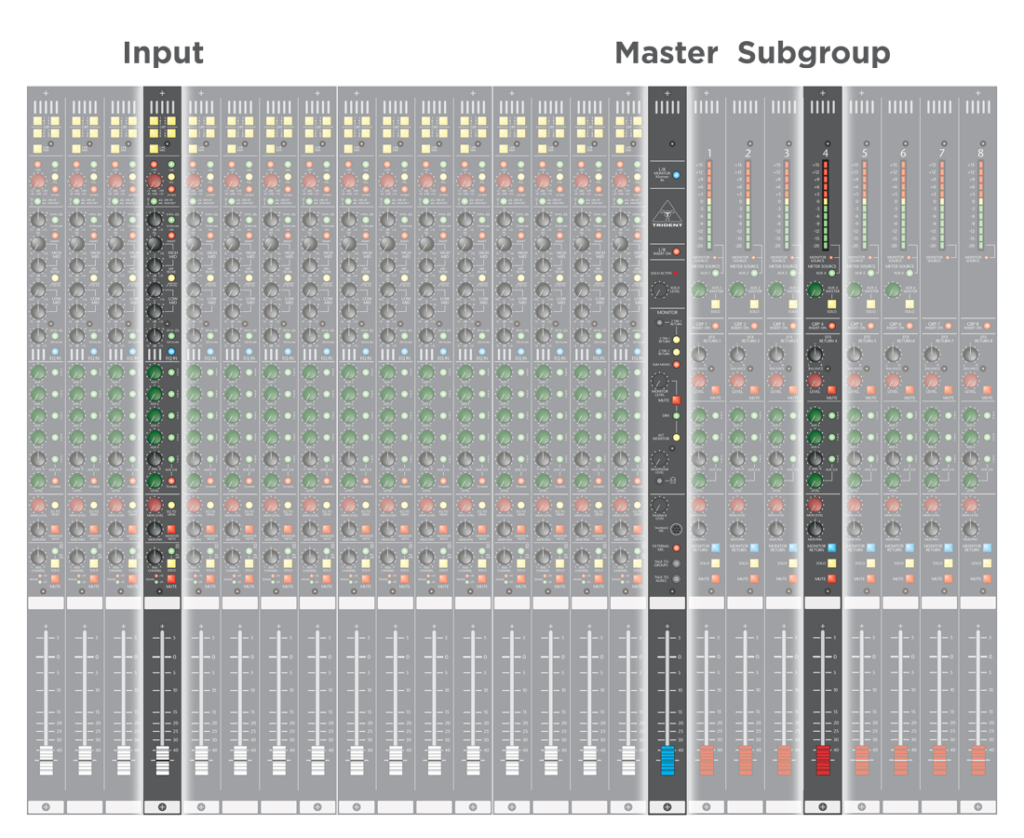
Trident 78 Configuration Videos
Connections
The Trident Series 78 utilizes DB-25 connections for fast and easy configuration on the majority of the console inputs and outputs.
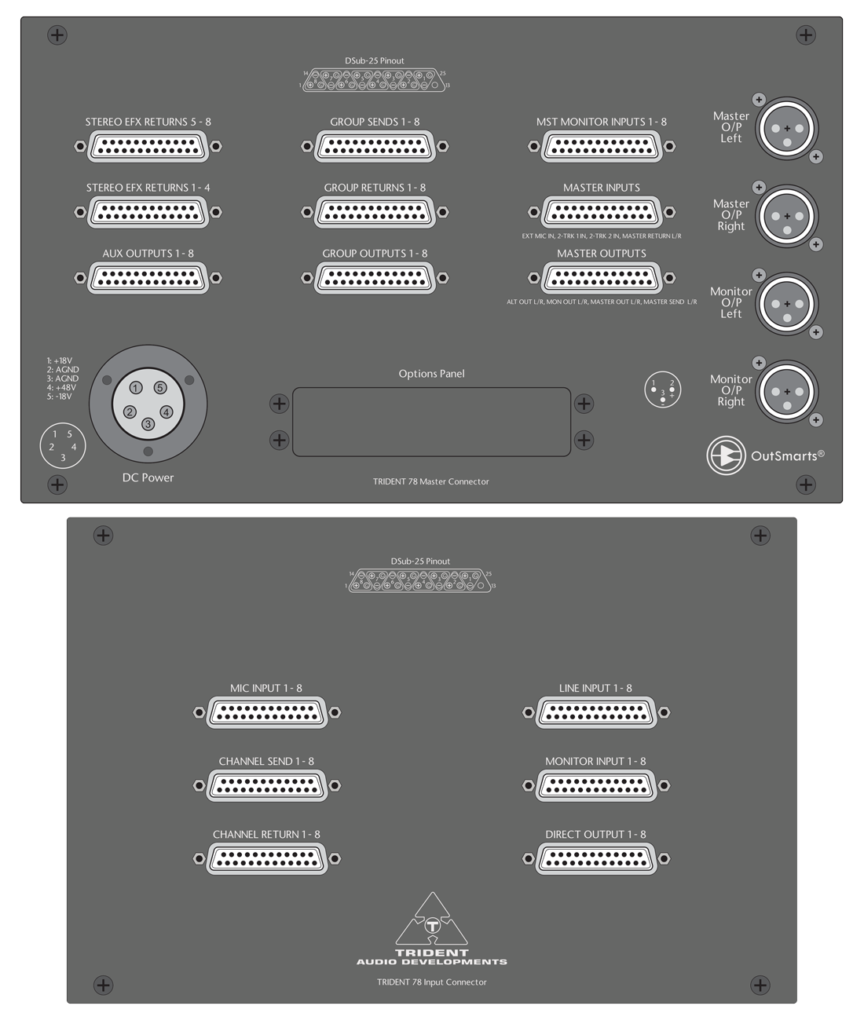
Product Specifications
| Input Impedance | |
| Microphone: | >2KΩ electronically balanced |
| Line: | >10KΩ electronically balanced |
| Output Impedance | |
| Left/Right, Monitor O/P, Group and Auxes | <60Ω (Outsmarts® Drive) |
| All other Outputs | <100Ω |
| Frequency Response | |
| Mic Input to Mix Output | <+0, -0.3dB 20Hz to 80KHz @ 6-40 dB gain. |
| Line Input to Mix Output | <0, -0.3dB 20Hz to 60KHz @ 0 dB gain. |
| Distortion/Noise (T.H.D +Noise) at +15dBu Output | |
| Mic XLR Input to any Output (-20dBu input) | <0.003% |
| Line Input to any Output | <0.003% |
| Monitor/Tape Return Input to any Output | <0.003% |
| Noise | |
| Mic EIN (20-20KHz, 150Ω source, 60dB gain) | <-128.5 dBu |
| Residual Bus Noise (Output fader at min) | <-96 dBu |
| Bus Noise (40 inputs continually assigned) | <-83 dBu |
| Bus Noise (24 inputs routed equiv. to 64 Inputs) | <-77 dBu |
| Crosstalk | |
| Adjacent Channel | < -100dB (@20KHz) |
| <-110dB (@1KHz) | |
| Channel Fader Mute | <-95dB (20Hz to 20KHz) |
| Monitor/Tape Return Mute | <-85dB (20Hz to 20KHz) |
| Mix/Bus Assign | <-80dB (20Hz to 20KHz) |
| Aux to Aux | <-80dB (20Hz to 20KHz) |
| Maximum Input | |
| Mic (XLR) Input (at min gain) | +17dBu |
| Mic (1/4") Input (at min gain) | +42dBu |
| Line (at min gain) | +42dBu |
| Channel Insert Return | +22dBu |
| All Output Insert Returns | +28dBu |
| Maximum Output | |
| Mix, Group, Aux, Monitor Outputs | +26.5dBu (Into 600Ω) |
| Insert Send, Studio, Alt Outputs | +22dBu (Into 2KΩ) |
| Phase | |
| Mic Input to Direct Out | +17º to -8º ..... 20Hz to 20Khz |
| Mic In to Mix Output | +25º to -17º ..... 20Hz to 20Khz |
| Line In to Mix Output | +25º to -20º ..... 20Hz to 20Khz |
| Monitor/Tape Return to Mix Output | +15º to -20º ..... 20Hz to 20Khz |
Product Dimensions
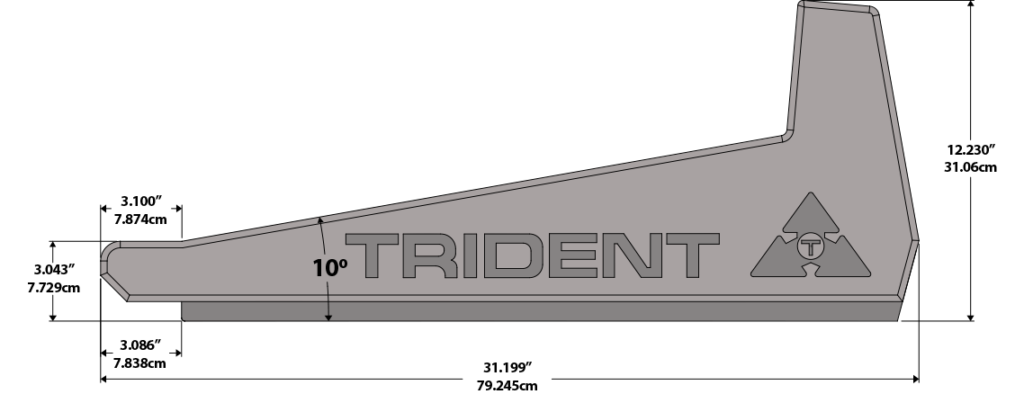
| Dimensions | |||
| Width (side to side including side panels) | Depth (front to back) | Height (top to bottom) | |
| 8 Channel: | 23.370" (59.359cm) | 31.199" (79.245cm) | 12.23" (31.06cm) |
| 16 Channel: | 33.370" (84.759cm) | 31.199" (79.245cm) | 12.23" (31.06cm) |
| 24 Channel: | 43.370" (110.159cm) | 31.199" (79.245cm) | 12.23" (31.06cm) |
| 32 Channel: | 53.370" (135.559cm) | 31.199" (79.245cm) | 12.23" (31.06cm) |
| Module width is 1.25" (3.175cm) |
| Trident Series 78 Consoles Power Consumption | |
| Total 16 Input Mixer | 115 Watts |
| Total 24 Input Mixer | 150 Watts |
| Total 32 Input Mixer | 185 Watts |
Trident 78 Console Photo Gallery
| Console | Trident 88 | Trident 78 | Trident 68 | Rupert Neve 5088 | API 1608 | API Box | Audient ASP4816 | SSL XL-Desk |
|---|---|---|---|---|---|---|---|---|
| Price | $32,750.00 | $21,000.00 | $13,750.00 | $98,500.00 | $49,900.00 | $16,145.99 | $16,999.99 | $32,999.99 |
| Channels | 16 | 16 | 16 | 16 | 16 | 20 | 16 | 20 |
| Automation | Optional | No | No | Optional | Optional | Optional | No | No |
| Inputs - Mic Preamps | 16 x XLR Class A Discrete with transformer option | 16 via D Sub Class A Discrete | 16 via D Sub | None (Optional) | None (Optional) | 4 x XLR | 16 x XLR | 8 via DB25 |
| Phantom Powered Inputs | 16 | 16 | 16 | None (Optional) | None (Optional) | 4 | 16 | 8 |
| Channel Inputs - Line | 32 (16 Line and 16 Monitor on 1/4 "TRS) | 32 D Sub | 32 D Sub | 32 (12 Mono 4 Stereo XLR and 16 Tape XLR) | 32 (16 1/4" TRS Instrument and 16 XLR Line) | 20 4 x TRS (input channels); 2 x DB25 (summing channels 1-8 and 9-16) | 16 x TRS | 48 (16 Line DB25 16 DAW DB25 16 500 DB25 |
| Inputs - Other | 19 8 Stereo FX 1/4" TRS, 8 Mono Monitor Returns 1/4" TRS, 2 Stereo 2 Track Returns 1/4" TRS, 1/8" Stereo Input (Ipod) External Talkback Mic XLR | 19 8 Stereo FX D Sub, 8 Mono Monitor Returns D Sub, 2 Stereo 2 Track Returns D Sub, 1/8" Stereo Input (Ipod) External Talkback Mic XLR | 19 8 Stereo FX D Sub, 8 Mono Monitor Returns D Sub, 2 Stereo 2 Track Returns D Sub, 1/8" Stereo Input (Ipod) External Talkback Mic XLR | 12 8 Buss Input 1/4" TRS, 4 L/R Mono Returns XLR | 32 16 Fader Input 1/4" TRS and 16 EQ Input 1/4" TRS with optional 500 units added | 4 x TRS (instrument) 1 x DB25 (external 2-track inputs) | 16 16 Monitor Inputs | 4 Stereo via DB25 |
| Number of Inputs to Mix | 56 (all with EQ) 16 Channel Inputs 16 Channel Monitor Inputs 8 Stereo Effects Returns (=16) 8 Group Monitor Inputs | 56 16 Channel Inputs 16 Channel Monitor Inputs 8 Stereo Effects Returns (=16) 8 Group Monitor Inputs | 56 16 Channel Inputs 16 Channel Monitor Inputs 8 Stereo Effects Returns (=16) 8 Group Monitor Inputs | 32 16 Channel Inputs 16 Tape Inputs | 32 16 Channel Inputs 8 Buss Inputs | 20 16 Summing Inputs 2 EQ Inputs 2 500 Slot Inputs | 48 16 Channel Inputs 16 Monitor Inputs 4 Stereo Inputs | 20 16 Mono 4 Stereo |
| Inserts | 42 (16 Chan, 16 Mic Insert, 8 Subgroups and 2 Main) | 25 (16 Chan, 8 Subgroup and 1 Main) | None (Optional) | 26 16 chan 1/4" TRS, 8 Buss 1/4" TRS, 2 Main 1/4" TRS | 16 1/4" TRS | 16 | 16 Via DB25 | |
| EQ's | 48 16 4 Band, 16 Tilt, 16 Hi/Lo | 16 3 Band | 16 3 Band | None (Optional) | None (Optional) | 2 | 16 | None (Optional) |
| EQ Bands | 4 Band Sweepable (all 16 Inputs ) Tilt EQ (all 16 Channel Monitor I/Ps) Hi/Lo (all 8 Group Monitor Returns) Hi/Lo (All 8 Stereo FX Returns) | 4 Band, Mid Bands Sweepable (all 16 Inputs ) | 3 Band Sweepable with adjustable Q | None (Optional) | None (Optional) | 3-band, sweepable (x 2) | 4 Band | None (Optional) |
| Aux Sends | 8 4 Mono Pre/Post 2 Stereo Pre/Post, | 6 4 Mono Pre/Post 1 Stereo Pre/Post, | 6 4 Mono Pre/Post 1 Stereo Pre/Post, | 8 Mono Pre/Post | 8 Stereo Aux Pre/Post | 4 x sends fed by 2 mono aux sends (1/2), and 1 stereo aux/cue send (3/4) | 6 sends | 2 via DB25 |
| Outputs - Direct | 16 1/4 TRS (Selectable post return or post fader) | 16 D-Sub (Selectable post return or post fader) | 16 D-Sub (Selectable post return or post fader) | 16 XLR | 16 XLR | 16 via D-SUB | 3 via D-SUB | 16 Via DB25 |
| Outputs - Main | 2 XLR Main Out, 2 XLR Monitor Out, 2 Alt TRS Stereo, 2 TRS L/R Studio | 2 XLR and D Sub Main Out, 1 XLR and D Sub Monitor Out, 2 D Sub L/R Studio | 2 XLR and D Sub Main Out, 1 XLR and D Sub Monitor Out, 2 D Sub L/R Studio | 2 x XLR L/R Main Out, 6 x XLR L/R (A,B,C Feeds) | 2 XLR Main Out and 6 XLR Out for 5.1 | 2 x XLR (program); 4 x XLR (main, alt CR outputs) | 8 x XLR | 2 XLR L/R 3 x DB25 |
| Outputs - Other | 16 8 Aux Out 1/4" TRS 8 Group Out 1/4" TRS | 14 6 Aux Out D-Sub 8 Group Out D-Sub | 14 6 Aux Out D-Sub 8 Group Out D-Sub | 8 Aux Outputs XLR | 8 Echo Return to Optional 500 Slots 1/4" TRS | 1 x DB25 (4 aux outputs / 2 cue outputs) | 24 D-Sub Group Outputs | 8 Stereo via DB25s |
| Busses/Groups | 8 | 8 | 8 | 8 | 8 | 2 | 16 | 4 Stereo Buss |
| Faders | 25 | 25 | 25 | 25 | 17 | 20 | 16 | 20 |
| Headphones | 1 x 1/4" TRS and 2 x 1/8 " | 1 x 1/4" TRS and 2 x 1/8 " | 1 1/4" TRS | 1 1/4" TRS | 1 x 1/4" TRS | No | 1x 1/4" TRS | |
| Meter Bridge | Full LED Stock, VU Optional | Full LED Stock, VU Optional | Full LED with Stereo VU's | No, Optional VU Bridge | Yes Full VU | 2 VU Stereo Only | Yes LED | 4 Stereo Mix LED Bargraphs |
| Talkback | Yes | Yes | Yes | Yes | Yes | Yes | Yes | Yes |
| All competitor stats gathered from information available online. |
